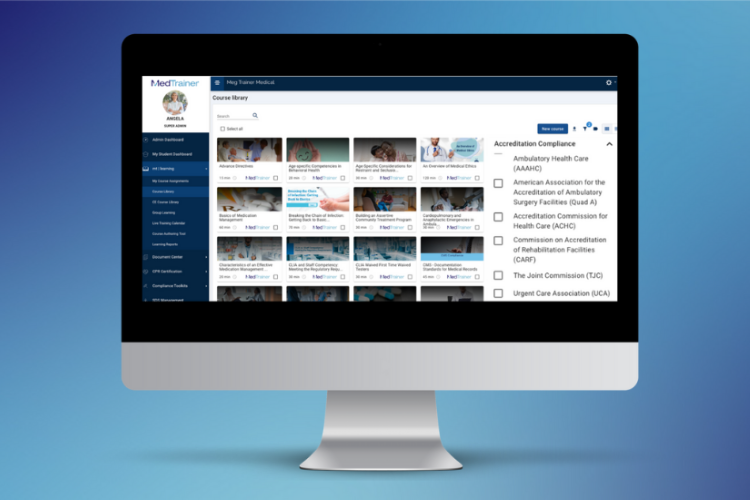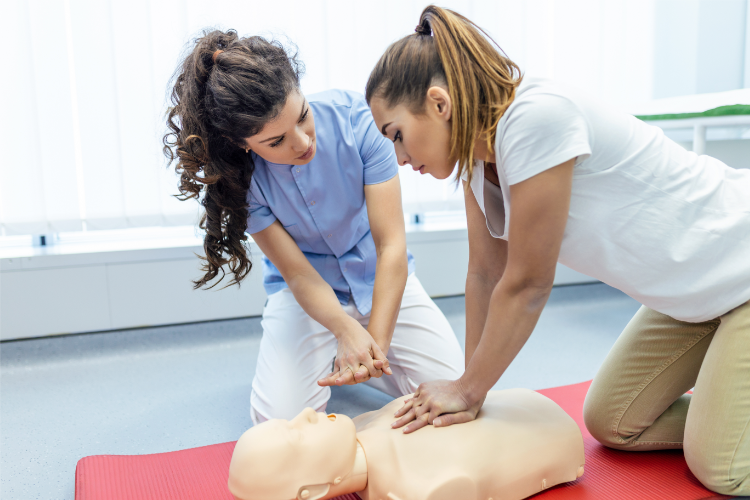Navigating the world of medical training requirements can be daunting, with numerous courses and varying durations. One of the most frequently asked questions by those considering taking a course is, “How long is CPR training?”
Whether you’re looking to meet compliance requirements or interested in bolstering your résumé, understanding how long CPR training will take is essential. In this blog post, we’ll dive deep into the duration of different CPR courses, factors that influence the length, and what you can expect during your training session.
Healthcare CPR Training Options and How Long It Takes
The length of training” depends on the type of training needed. Basic courses for the general public could be as short as two hours, but healthcare professionals are required to have more in-depth training.
Basic CPR training for healthcare takes four to six hours to complete the initial training, which requires both classroom or online instruction as well as hands-on skills practice. Healthcare professionals can complete refresher training more quickly, especially in an online setting.
How Long Will CPR Training Take?
| Type of CPR Training
|
CPR Training Duration | In-Person/Blended/Online |
| CPR/BLS First Aid for Healthcare Providers
|
4 to 6 hours | In-Person, Blended |
| ACLS (Advanced Cardiovascular Life Support)
|
10 to 16 hours | In-Person, Blended |
| PALS (Pediatric Advanced Life Support)
|
14 to 16 hours | In-Person, Blended |
| Refresher Training
|
Less than 4 hours | In-Person, Blended, Online |
Factors That Influence the Length of CPR Training
Considering these factors can help prospective students choose the right CPR course for their needs and have a clear idea of the time commitment involved.
Course Type: There are different types of CPR courses tailored to various audiences. A basic course designed for the general public might be shorter than a professional-level course intended for healthcare professionals.
Content Depth: Some courses cover only adult CPR, while others may delve into pediatric CPR, automated external defibrillator (AED) use, or first aid. The more comprehensive the content, the longer the course is.
Certification Requirements: For courses that offer certification, there might be mandated minimum training hours.
Method of Instruction: Traditional in-person classes often involve both theoretical and practical sessions, which can take more time compared to online courses. However, some online courses might be self-paced, allowing participants to take longer as needed.
Instructor’s Approach: Some instructors might use a more hands-on approach, ensuring each student gets ample time to practice skills, while others might prioritize theory or real-life scenarios.
Refresher vs. Initial Training: Refresher courses, designed for those who’ve already been trained but need to renew their certification, are generally shorter than initial training courses.
Making the Best CPR Training Choice for Healthcare Employees
Many healthcare organizations choose to provide CPR/BLS, ACLS, and PALS training for their employees. This is a great benefit because the cost of courses and refreshers can add up! It is also great for the healthcare organization because you can be confident in the skills that are learned and know that the education is standard across all roles, departments, and locations.
When a healthcare organization is using a learning management system (LMS) to offer CPR/BLS First Aid training, it is very simple to see an employee’s progress and to track all certifications alongside the completion of required regulatory training. You can even receive automated notifications when the training will expire so you can ensure there isn’t a lapse in compliance.
Learn more about MedTrainer’s CPR/BLS First Aid, ACLS, and PALS certifications.

